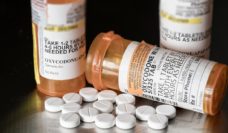Clinical pharmacists are specially trained to provide comprehensive medication management to patients and to collaborate with physicians and other providers. Clinical pharmacy specialists (CPS) make significant contributions to patient care and are recognized as performing as well as physicians in managing chronic disease. In this era of team-based medical care, the CPS role has expanded beyond conventional medication dispensing in the United States. Health professionals differ in their expectations of clinical pharmacy services, which can range from prescribing medications to administering vaccines as well as working in mental health, cancer and surgical care, etc. Clinical pharmacy is rapidly expanding and the knowledge of what clinical pharmacists can contribute to team-based care is under-recognized. This article highlights what CPSs can contribute to patient care and their potential to ameliorate some persistent problems in patient care.
What are clinical pharmacy specialists?
Clinical pharmacy has undergone innovations in the past 40 years. In addition to involving a rigorous doctorate-level PharmD degree, pharmacy residencies (post-doctoral training) train pharmacists in particular skills and specialty knowledge in a wide range of areas like, pain management, specific disease management (diabetes, anticoagulation, blood pressure), mental health care, and more. In many medical schools, CPSs and doctors train side-by-side. CPSs in the Department of Veterans Affairs (VA) and in many states (through collaborative practice agreements) have the legal authority to prescribe, order laboratory tests, and perform all functions for comprehensive medication therapy management.
Exploring the CPS Scope of Practice
Clinical pharmacy specialists operate most effectively in close collaboration with physicians/prescribers. A CPS can operate in both independent and collaborative roles with a physician/prescriber. For example, CPSs can work collaboratively under physician recommendations to manage a disease state with a patient. A CPS can also independently run a disease clinic where they monitor dosing adjustments and work one-on-one with patients as needed in perpetuity (e.g., anticoagulation clinic) or until a patient’s goal has been reached (e.g., diabetes clinic).
Clinical pharmacy specialists have the schedule capacity to meet with patients more frequently and to work intensively on one particular health problem. Given a physician’s packed schedule, access to a CPS may get struggling patients into care sooner. It is important to note that CPSs do not diagnose. A CPS may run a disease clinic independently but patients are referred by doctors to that clinic and are copied on clinical notes. Physicians often consult with CPSs to explore medication options for patients with multiple chronic conditions or to solicit drug interaction information. Additionally, CPSs can answer patients’ questions about their medications.
Challenges
The types of care CPSs are authorized to provide vary greatly by state and healthcare system. In the Veterans Administration, the largest integrated healthcare system in the United States, national policy dictates CPS scope of practice and reimbursement. At the state level, however, patchwork regulations unevenly dictate what a CPS can and cannot do. Reimbursement for clinical pharmacy services is also complicated in terms of both policy and practice.
U.S. healthcare is limited by a shortage of primary care providers, an aging population, and the troubling and thorny problem of physician burnout. Team-based medical care is here to stay and CPSs are in an excellent position to make substantial contributions to improving access, quality, patient outcomes and controlling costs. Improving clinical pharmacy practice and policy at a national level will allow CPSs to contribute to team-based health care more consistently across systems and, ultimately, improve patient care.
Feature image: Clever Cupcakes, Doctor Themed Cupcakes, used under CC BY 2.0













